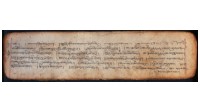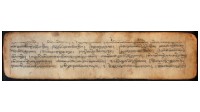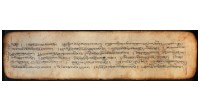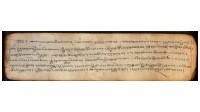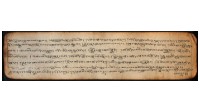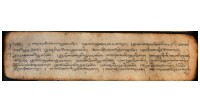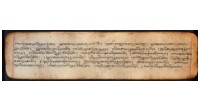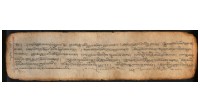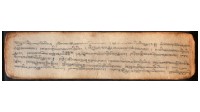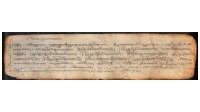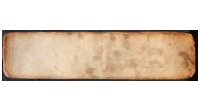DRANGSONG MANUSCRIPTS
| 1. Text number | Drangsong 110 |
| 2. Text title (where present) in Tibetan |
༄༅།།རླུང་པོ་ལེགས་པ་གཅིག་བཞུགསྷོ།། དགེའོ།བཀྲ་ཤིས[བྱོག]ཤོག།། |
| 3. Text title (where present) in Wylie transliteration | Rlung po legs pa gcig bzhugs+ho/ dge’o/ bkra shis[byog] shog/ |
| 4. A brief summary of the item’s contents | It tells the story of a couple whose fortune (rlung rta) was deficient and whose lives were full of disasters due to the incompatibility of their zodiacal signs, and who then revive their fortunes through a ritual after inviting a ritual specialist. |
| 5. Number of folios. | 7 |
| 6. item number and filenames of the corresponding photographs;
|
v110_IMG_2960 – 2967 |
| 7. Translation of title | A ritual for reviving personal fortune |
| 8. Transcription of colophon | mi nor bu dpal ’dzoms pa’i mda’ 1/ ’phang phud chen po 1/ ba mo ri 13/ chu bu ri 13// lo bcu gnyis la/ byi phag nag po/ de bzhin brgyd bu phyogs ’dog dang mthun pas shes dgos/ mdos mdzod ’am/ nang gi phyug tu ’byong/ phyogs dkar la kha lta’o/ gzhi ma dkar po steng tshe ring phyir rdo rje ’am/ g.yung drung ris bris la/ yon bdag phyogs dkar la kha ltas la mdos dang rdzas rnams bzhag go/ bkra shis byon/ |
| 9. Translation of colophon | An arrow for the gathering of people, livestock, offspring and property; a large spindle; thirteen of ba mo ri (?) and thirteen chu bu ri (?). And, for the [harmonisation of the] twelve years, there should be black [effigies of] a rat and a pig, and wooden tablets (rgyang bu) should be placed in [the four] directions with the colours that match those directions. The treasury of the mdos (mdos mdzod) or the interior… (? nang gi phyug tu ’byong). It should be oriented to face the auspicious direction. In order to achieve longevity, make drawings of crossed vajras or swastikas on top of a white base-mat. The patron should face the auspicious direction, and the mdos effigy and the ritual items should be put in place. May there be blessings. |
| 10. Remarks | In the text, the place of rGya yul gtan bzang, with the priest Drang srong nag po appears in Tibetan astronomical texts about a place with a protagonist in the Chinese elemental divination (nag rtsis), although it is impossible to verify this specifically. At the same time, the interpretation of the cultural significance of rlung in this text, which includes not only the spiritual aspects of traditional Tibetan medicine, but also involves the numerological theory of the divination and astronomical tradition (nag rtsis) , provides a good context for discussing the original etymology of rlung and rlung rta (fortune) and their evolution in the context of related numerological terms such as dbang thang, srog, lus, tshe, and so forth. |
|
Back lit samples |
 |



